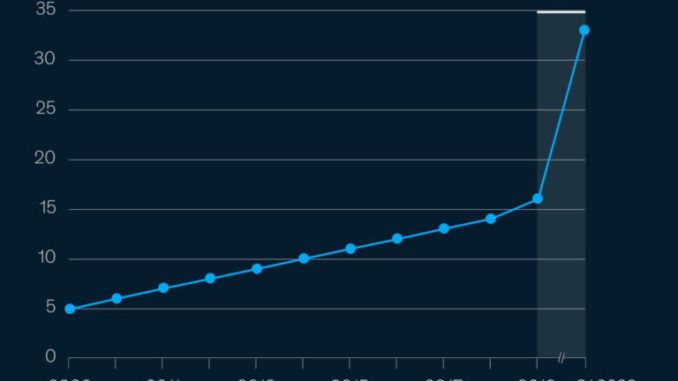
30-second summary:
Digital channels are booming. Ecommerce activity has grown 5-10 years in the space of 3 months.
Digital-first companies who have been agile in directing investment to organic search are seeing the best results.
Challenges in companies are mostly organizational. Better alignment is needed between marketers and engineers.
One tip for marketers? Invest in the website.
This past Friday saw the latest in our weekly series of briefings for our peer network. We were pleased to welcome (remotely) Alex Schaefer, Chief Revenue Officer at DeepCrawl.
DeepCrawl is a pioneer in enterprise cloud-based web crawling technologies and Schaefer is clearly in a unique position to observe what is going on in digital marketing as the coronavirus pandemic triggers a global change in consumer habits.
It was a fascinating presentation. Particularly for marketers yet to make the proper leap into organic search marketing. Here are my key takeaways.
How have digital channels changed during COVID?
Digital channels are now more important than they ever have been. Coronavirus has seen the physical world largely shut down in regions all around the globe.
This has been reflected in data focused on ecommerce activity.
McKinsey has seen 10 years worth of growth in US ecommerce penetration in just the first three months of 2020.
Additional US data from Adobe underpins the importance of new buyers when it comes to online spend. In April, new buyers increased their online spend by more than 50% on average, while return buyers upped theirs by just over 40%. In May, both segments were increasing their online spend by over 70%.
“Clearly we’re seeing lots of new buyers coming in, trying new things, trying new brands,” Schaefer says. “Digital has become the only game in town. And we will be in a more digital world indefinitely.”
Who’s winning?
With such an unprecedented leap in digital channels from consumers, it has been hard for marketers to handle this change well. Schaefer notes that there is a spectrum of some companies doing better and some doing worse.
“Digital-first companies – brands like eBay – are excelling,” he says. “And it’s not just “hot” category brands and products. They’re not all selling hand sanitizer.”
The attribute which seems to link these aware ecommerce companies is that they are sufficiently agile enough to quickly turn investment towards organic search.
“Organic search has been most important,” Schaefer adds. “It is a large traffic source, at around 53% of trackable web traffic. Companies are seeing huge results from relatively small investments compared to those you’d see for other channels such as paid search ads.”
The challenge in alignment
Schaefer highlights that the key hurdles companies face are organizational ones.
He sees a challenge in alignment between CMOs and CTOs within businesses. This can be due to differences in their overarching areas of focus. Or at a more granular level, the respective tasks they face on a day-to-day basis.
“Marketers and engineers have a different mindset,” Schaefer says. “Increasingly, marketing wants to tie activities to revenue growth, while engineers are very tied up in solving technical debt. Around 40% of an engineer’s time is spent sorting this out and marketers need to understand that.”
One tip for marketing leaders
If there’s just one piece of advice Schaefer can give to marketing leaders during this time, it is: ‘invest in the website’.
It’s a simple mantra. In a basic onsite optimization sense, he points to:
Site Speed
SEO-friendly architecture
Good customer journeys
Good bot journeys
Organic and general site health
Marketers need to be aware of these from the outset. But he also urges them to think of the website as more of a holistic thing, rather than simply throwing money at singular aspects such as design or content.
Schaefer identifies three key areas:
Process
Tech stack
Talent
All of these overlap to some degree. And all go towards ensuring the website is working the best it can in a world increasingly dependent on organic search traffic.
Site design, rank signals and technical SEO are certainly important. But the quicker organisational challenges to do with processes, skills gaps, and getting better alignment between marketers and engineers, are sorted out, the better position companies will be in to make the most of today’s digital-first world.
The post What a digital-only world means for your marketing strategy appeared first on ClickZ.
Source: ClickZ
Link: What a digital-only world means for your marketing strategy


